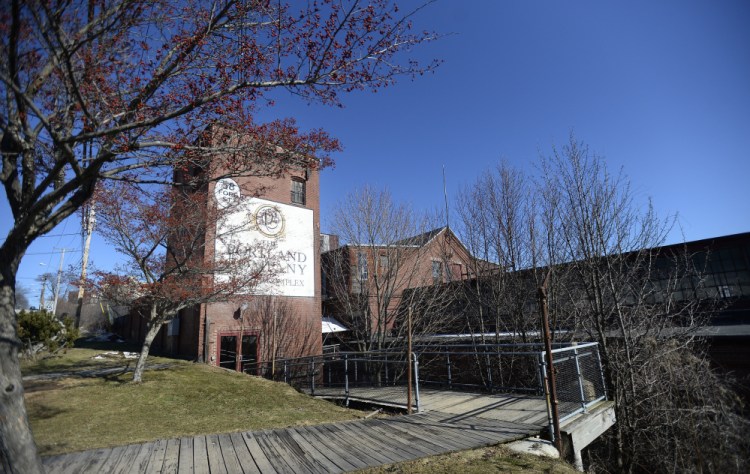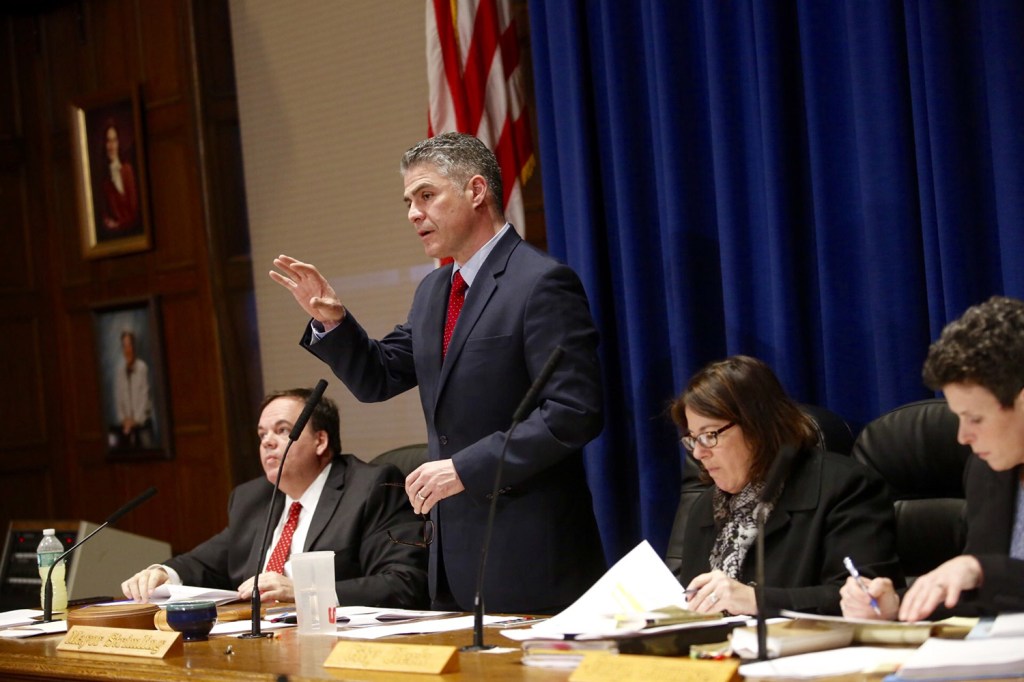The Portland City Council voted unanimously Wednesday night to approve a historic district that would allow the developer of the Portland Co. complex to tear down the former erecting shop on the site while preserving seven other buildings and creating a public plaza on the eastern waterfront.
An overflow crowd attended the public hearing on whether to designate the site of the former locomotive factory a historic district. The debate centered on whether the erecting shop’s historical significance outweighed the value of a waterfront plaza planned for the site by developers.
More than two dozen people spoke, with the majority supporting the developer’s plan to tear down the building and create a 50-foot right-of-way through the property to serve as a public plaza extending from Fore Street to the water.
They said the cost of repairing the former machine erecting shop could jeopardize the whole project, which would lead to further deterioration of the other seven buildings that the developer, CPB2, plans to restore.
“It’s a vote to let this project go ahead or kill this project,” said Tony McDonald, a real estate broker who tried to market the site for a previous owner.
Preservationists, however, said that without the erecting shop, built about 100 years ago, the site would no longer tell the story of the company that built it.
“It shows the assembly line process, the scale of operations and the long history of manufacturing at the Portland Co. complex,” said Hilary Bassett, executive director of Greater Portland Landmarks.
BOARD’S RECOMMENDATION AMENDED
Founded in 1846, the Portland Co. complex was built to support an effort to connect Portland to Montreal by rail. It was the first locomotive factory in the United States that brought all of the necessary shops and foundry together on one site. It operated for 137 years and was deemed eligible for the National Register of Historic Places in 1976.
Recently the building has been used for the popular flower show and boat shows.
The city’s Historic Preservation Board determined that the former erecting shop, which is salvageable but needs extensive structural work, is a significant part of the complex. It recommended a historic district that would cover 4.3 acres of the roughly 10-acre site and require preservation of eight of the 16 buildings.
The Planning Board, however, amended that recommendation to remove the erecting shop, which also is referred to as Building 1, and reduced the size of the proposed district, excluding land to the west of the entry road.
City Councilor Belinda Ray, who represents the city’s East End, offered an amendment Wednesday that would have protected Building 1 while following the Planning Board’s recommendation for changing district boundaries to remove part of the site. Her proposal was rejected by the council, 7-2, with Mayor Ethan Strimling joining her in trying to protect the building.
“It’s a pretty high bar to tear down a building you can never get back,” he said.
But other councilors agreed with the Planning Board’s analysis – that allowing the building to be torn down in favor of a plaza that encourages public access to the waterfront is in line with the city’s Comprehensive Plan.
“What do we see looking ahead? What is the future of this site?” Councilor Justin Costa said. “There are significant benefits of the project in the larger scope of things.”
WORK COULD BEGIN THIS YEAR
Councilor David Brenerman didn’t see the decision in terms of losing a historic building, but as one in favor of saving seven of them.
“The fact that a developer comes forward and is willing to put his money forward to preserve those buildings is something we should be happy about,” he said.
Ultimately, all of the councilors and the mayor voted in favor of the Planning Board’s recommendation.
Developer Jim Brady said the plaza will enhance the site and become a valuable asset for the city.
“It draws people into the site and really celebrates the facade in a historic way,” he said.
Brady said he needs to work with the city to acquire a small piece of land before submitting a site plan for the project.
The developers have said the plans include offices, retail spaces and housing, but they haven’t released many details. Brady hopes to have the city’s approval and, ideally, a shovel in the ground by the end of this year, though he knows it will likely take longer.
“We still have a long road ahead of us,” he said.
Send questions/comments to the editors.





Comments are no longer available on this story